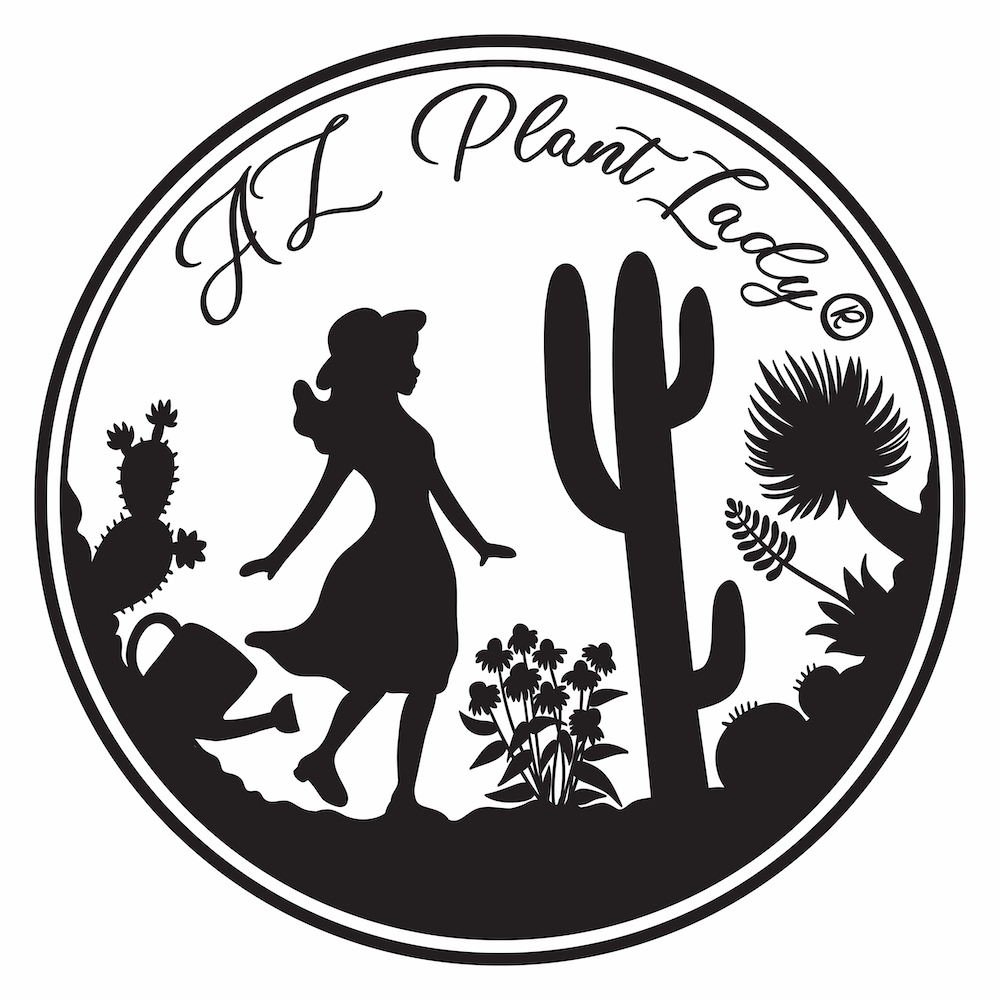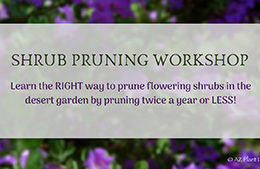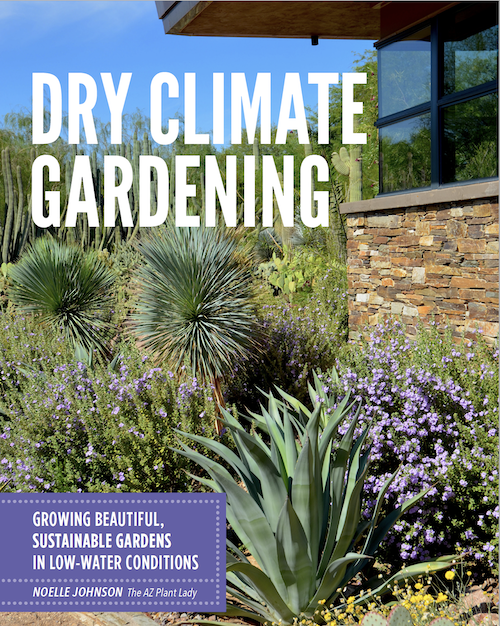Okay, you may be thinking, what am I talking about? Well long ago, on a spring morning, I noticed an intoxicating fragrance in the air that reminded me of grape bubblegum. Well, there were no candy stores nearby, but I did notice a small tree with beautiful purple blossoms. It turns out, that the fragrance was coming from the flowers.
The flowers hung down like grape clusters and I later found out that this tree was called Texas Mountain Laurel (Sophora secundiflora).
I have wanted to share this tree with you for a long time, but wanted to wait until they were flowering. Well, yesterday as I was visiting my mother (Pastor Farmer) at Double S Farms, I noticed that their Texas Mountain Laurel were beginning to flower and so hurried home to prepare this post.
There are so many wonderful things that I love about this tree. Of course, the fragrant, purple flowers are my favorite thing, but I also like that this tree is evergreen, drought-tolerant and easy to maintain.
They are native to Texas, New Mexico and Mexico. They grow approximately 20 – 25 ft. high and 10 – 15 ft. wide. They grow naturally as a large shrub, but are often seen trained as small trees.
This beautiful tree is hardy to approximately 20 degrees F. So, I highly recommend trying it in your landscape.
They flower in March and their grape bubblegum fragrance is unmistakable. Seedpods are formed shortly after flowering stops. I am not a huge fan of seedpods in general, but I really like the ones from this tree – their creamy color and shapes add interest to the tree.
Inside the seedpods are bright red seeds that are extremely hard and poisonous. Long ago, Native Americans would use the seeds to create bracelets and necklaces.
*One year, my nephews, (Mr. Green Jeans & Monkey Boy), took the seedpods and painted them yellow and painted little snowman faces on them and gave them as gifts for Christmas. I still have mine and it decorates my Christmas tree every year.
There is a another variety that has gray leaves, which is also just as beautiful in my opinion.
*Caterpillars can become a problem during warm weather, but you can just ignore them and/or pick them off. If you see loose webbing on the leaves, that is a sign that it is infected by caterpillars. The damage caused from the caterpillars does not usually hurt the tree. It helps if you detect the eggs before they hatch and remove them. Since caterpillars usually infect the new growth, I just prune off the affected areas.
Texas Mountain Laurel is a slow-growing shrub/tree and so I recommend buying the largest size you can afford if possible. Like so many flowering plants, there are those who formally prune it and remove all of the beautiful flowers – PLEASE don’t do this.
And so in closing, the next time you detect the fragrance of grape bubblegum in the air, look around you and see if you discover the beautiful Texas Mountain Laurel nearby.








Fruit Cocktail From a Tree?
Citrus, Fruit Trees, TreesMany of us have memories of school lunches and the little cup of fruit cocktail that sometimes came with it. Little bits of assorted fruit, served in a light syrup with a cherry for color.
What if I told you that there is a fruit tree that can produce up to 5 different kinds of fruit. Would you think I was crazy? Well, there is such a tree and it is called a “Cocktail Citrus Tree”.
At first glance, a cocktail tree can look like any other citrus tree you may encounter.
But, if you look closely, you may find the following fruit, all on the same tree.
Grapefruit…
Oranges…
…and Lemons.
Warning – if you don’t want to read the scientific explanation, just skip down to the next picture :^)
Citrus trees, like most fruit trees consist of two parts. The bottom part is called the ‘rootstock’, which in the case of citrus, is a hardy citrus plant that produces a healthy root system, but does not necessarily produce great tasting fruit. Then a bud from a tree that produces delicious citrus fruit, but may have a weaker root system, is grafted onto the rootstock. Over time, both of these parts will grow together into one tree.
A cocktail tree is created using this method, but instead of grafting only one type of fruit onto the root stock, up to 5 different fruits are grafted. Most often, you will find cocktail trees with 3 types of fruit in the nursery.
A few months ago, my mother, (Pastor Farmer), asked me to look at one of their citrus trees at Double S Farms. Some of the fruit on their grapefruit tree (above) looked smaller and was clustered more thickly on the branches.
It turns out that this was a cocktail tree and they had both lemons and grapefruit on the same tree.
If you have a cocktail tree, it is important to manage it correctly with pruning. For example, grapefruit are more vigorous growers then oranges, so you need to prune the grapefruit portion of the tree to keep it from taking over the other types of citrus.
**There are other types of cocktail trees that have peach, plum, apricot and cherry grafted onto the same tree.
A cocktail tree is a great solution for those who have a small gardening area, but would like to have a nice variety of fruit. You can have it all in one tree.
And, you can also use the fruit to create your own homemade fruit cocktail.
Three Kids, One Cabbage and a Caterpillar…
Vegetable GardeningLast fall, I planted a flower garden with my children using their old, plastic swimming pool. You can read more about “A Children’s Garden in an Unusual Place” if you like. The flowers grew and the kids loved taking care of watering their new plants.
My mother, (Pastor Farmer), had a few cabbage transplants that she had purchased for her vegetable garden left over and gave them to the kids. So, we planted two cabbages in the flower garden.
Like most children, my 3 youngest children love to play outside. One morning, my daughter ran in and told me to hurry outside “to see something really neat.”
Cabbage Transplants
What they had discovered was a little caterpillar on one of our transplanted cabbages. It was so small that I had to put on my “old lady” reading glasses just to see him clearly.
The kids were so excited about their find that they were jumping up and down. Isn’t it amazing at how the simple things bring such joy into a child’s life?
Here is the caterpillar, who the kids named “Wormy”. I apologize for the out of focus picture, but it is the best one that I have of him.
My children moved a patio chair right next to the the garden so that they could observe their new pet closely. For three weeks, they would hurry home from school and run outside to sit and watch him – (at least I think it is a him).
Then in January, the rains came and one day, we could no longer see “Wormy”. My fear was that maybe he had been washed away by the storm. To be honest, the kids were not too upset because by that time, they had tired of watching him all of the time and had moved on to watching their new rose shrubs grow. I am thankful that at least “Wormy” lives on in our pictures and I have another childhood story to share with my children when they grow up.
By the way, the Three Little Roses are doing well and I will post pictures soon. There have actually been a few surprises.
I hope you are all having a great week!
Grape Bubblegum Flowers….
AZ Plant LadyOkay, you may be thinking, what am I talking about? Well long ago, on a spring morning, I noticed an intoxicating fragrance in the air that reminded me of grape bubblegum. Well, there were no candy stores nearby, but I did notice a small tree with beautiful purple blossoms. It turns out, that the fragrance was coming from the flowers.
The flowers hung down like grape clusters and I later found out that this tree was called Texas Mountain Laurel (Sophora secundiflora).
I have wanted to share this tree with you for a long time, but wanted to wait until they were flowering. Well, yesterday as I was visiting my mother (Pastor Farmer) at Double S Farms, I noticed that their Texas Mountain Laurel were beginning to flower and so hurried home to prepare this post.
There are so many wonderful things that I love about this tree. Of course, the fragrant, purple flowers are my favorite thing, but I also like that this tree is evergreen, drought-tolerant and easy to maintain.
They are native to Texas, New Mexico and Mexico. They grow approximately 20 – 25 ft. high and 10 – 15 ft. wide. They grow naturally as a large shrub, but are often seen trained as small trees.
This beautiful tree is hardy to approximately 20 degrees F. So, I highly recommend trying it in your landscape.
They flower in March and their grape bubblegum fragrance is unmistakable. Seedpods are formed shortly after flowering stops. I am not a huge fan of seedpods in general, but I really like the ones from this tree – their creamy color and shapes add interest to the tree.
Inside the seedpods are bright red seeds that are extremely hard and poisonous. Long ago, Native Americans would use the seeds to create bracelets and necklaces.
*One year, my nephews, (Mr. Green Jeans & Monkey Boy), took the seedpods and painted them yellow and painted little snowman faces on them and gave them as gifts for Christmas. I still have mine and it decorates my Christmas tree every year.
There is a another variety that has gray leaves, which is also just as beautiful in my opinion.
*Caterpillars can become a problem during warm weather, but you can just ignore them and/or pick them off. If you see loose webbing on the leaves, that is a sign that it is infected by caterpillars. The damage caused from the caterpillars does not usually hurt the tree. It helps if you detect the eggs before they hatch and remove them. Since caterpillars usually infect the new growth, I just prune off the affected areas.
Texas Mountain Laurel is a slow-growing shrub/tree and so I recommend buying the largest size you can afford if possible. Like so many flowering plants, there are those who formally prune it and remove all of the beautiful flowers – PLEASE don’t do this.
And so in closing, the next time you detect the fragrance of grape bubblegum in the air, look around you and see if you discover the beautiful Texas Mountain Laurel nearby.
A Vegetable Garden in the Middle of an Unexpected Place…
Vegetable GardeningFor those of you who have not met him yet, I would like to introduce you to my nephew, Green Jeans. He is the resident vegetable gardener at “The Refuge”, which is where my sister and her family live.
There is always something growing in his garden.
Sweet Peas rush to climb up the trellis….
Cauliflower heads begin to form….
Anaheim Peppers are getting ready to heat up….
There is also simple beauty in the leaves of vegetables, don’t you think?
My sister, Daisy Mom and her daughter, Fruity Girl, enjoy the harvest from their vegetable garden. Especially the tomatoes….
Now many of you may be wondering where this “Unexpected Place” is…
Well, this vegetable garden sits in the middle of the sandy California desert.
People who do not live in the desert are frequently amazed that anything can grow there. But, the California desert is actually a huge source of commercially grown vegetables, such as lettuce, onions, carrots, broccoli, corn and spinach totaling over 1 billion dollars a year.
I am getting very excited about visiting my sister and the other residents of “The Refuge” soon. Mr. Green Jeans is planning for his spring planting of the vegetable garden. I can hardly wait to see what they have planted.
We are considering planting a vegetable garden this year in our garden and need to get started in the next week or two. I am thinking of making it a fun project to do with my kids over their spring break in the next week or two. Of course, I will be posting all about it…
So, for those of you who have been thinking of planting a vegetable garden, why don’t you? We can do this together….in the virtual sense ;^)
Flowering Mostly All Year Long…
Arizona garden, Flowering AnnualsI love color in the garden. My garden is full of flowering shrubs and perennials. I am blessed to live in an area where it is possible to have flowers in my garden 12 months of the year. My favorite way to accomplish this is to include plants that flower most, if not all year long.
Today, I would like to share with you some of my favorites….
Angelista Daisy
Full of flowering, Angelita Daisy (Tetraneuris acaulis) Flowers year-long with heaviest bloom occurring in spring and fall.
Baja Red Fairy Duster
Red Fairy Duster (Calliandra californica) This shrub has beautiful flowers 12 months of the year. Blooming does slow down in winter, but flowers are still present.
Pink Bower Vine
Pink Bower Vine (Pandorea jasminoides) Two of these vines grace the front entry to my house. They produce flowers all year, but do slow during the hot summer months.
Blue Bells
‘Blue Bells’ (Eremophila hygrophana) Resembles Texas sage, yet stays compact at 3 feet tall and wide. Purple flowers are produced all 12 months of the year.
Baja Ruellia
Baja Ruellia (Ruellia peninsularis) One of my absolute favorite shrubs. Purple flowers are present all year, but blooming slows down in winter.
Cape Honeysuckle
Cape Honeysuckle (Tecomaria capensis) Reliable bloomer throughout the year. Hummingbirds flock to the beautiful orange flowers. Winter temperatures slow down blooming.
Mexican Bird-of-Paradise
Mexican Bird-of-Paradise (Caesalpinia mexicana) This versatile shrub can be trained as a small tree. I have 4 in my landscape. Yellow flowers are produced off and on all year.
Purple Trailing Lantana
Purple Trailing Lantana (Lantana montevidensis) In a protected area (under an overhang or underneath a tree), this groundcover can bloom all year long. The lantana pictured above, was located underneath an overhang which is why is still looked wonderful in January when I took this photo.
Plants Full of Flowering All Year Long in Zone 9a
I live and work in zone 9a and so the plants bloom times are affected by our highest and lowest temperatures. As a result, many of the plants that do flower all year long will slow down in the winter and fewer blooms will be produced. But, in my experience, there are still flowers even in January.
Plants such as the lantana and cape honeysuckle will produce more blooms in the cold winter months if planted in protected area. Examples of protected areas are up against a house, underneath the eaves or underneath a tree. I have a bougainvillea that has stayed green all winter and still has flowers on it because it is located underneath a tree.
I hope you will try some of my favorite flowering plants. For those of you who live in different climates, look for plants that will provide you with color for as long as possible. If you cannot have blooming flowers year-long, then try incorporating plants with beautiful foliage and textures so that there is always something beautiful to see in your garden every single month of the year.
**For more suggestions for colorful plants for your arid garden, I recommend my book, Dry Climate Gardening, which lists many trees, shrubs and perennials that add beauty while thriving in our often challenging climate.
Red Globe Mallow Seeds
AZ Plant LadyI absolutely love this shrub. It flowers for me fall through spring. Normally, Globe Mallow (Sphaeralcea ambigua) is seen with orange flowers. However, there are some varieties that produce red, purple, pink, white or coral flowers.
I have posted about this native desert plant previously and you can read more here if you like.
This fall, I harvested seeds from my Red Globe Mallow and I would like to offer some to those of you who are kind enough to read my blog.
Please keep in mind that Globe Mallow is native to the southwestern regions of the United States and therefore is used to a somewhat dry climate with warmer winters. I have also listed the following for you to look over in order to help you decide if Globe Mallow will grow and thrive where you live:
– Globe Mallow are hardy to approximately 20 degrees F.
– They grow to approximately 3′ x 3′.
-Globe Mallow require full sun – no shade.
-They are extremely drought-tolerant, so should not be located in a wet area.
-Globe Mallow attracts both hummingbirds and butterflies.
-Does best without fertilizer.
My Red Globe Mallow is located nearby some pink and white varieties as well, ( I don’t have any seeds from these yet), and cross-pollination does occur. So, some of the seeds may produce Globe Mallow shrubs that produce flowers other then red. And so…be prepared for a surprise ;^)
Obviously, I don’t have enough seeds to give to everyone. So, I will send seeds to the first 10 people who request them. Be sure to leave a comment and then email me your address using the email link on my blog.
I can’t wait to share the seeds with you. This plant is extremely easy to start from seed and I am always pulling out volunteers that come up all over my garden.
I hope you are all having a great weekend!
First Baby Steps Outdoors….
Double S FarmsIt is hard to believe that just two weeks ago, we were first introduced to the newest residents of Double S Farms.
Newest residents, Two Days Old
Two weeks is actually a lot of time to a small chick. Look at how quickly they have grown….
From left to right, meet Flo, Ramona, Effie and Lucy.
They made their first foray into the great outdoors for two hours. I don’t know who was more excited…the chicks or my sister, Chicken Farmer.
Their feathers are rapidly forming, especially on their wings. They still spend the majority of their time indoors as they are too young to be outside other then a couple of hours.
They are already trying to fly and one has even managed to escape the brooder and so now the lid will now stay closed.
Doesn’t that remind you of how exciting it is to see a little toddler take their first steps….until they start getting into things due to their new mobility. I can definitely see similarities with raising chicks.
Before we leave, please take one last look as the chicks are proudly showing off their newly grown tail feathers for the camera.
Don’t worry…this is not the last we will see of Flo, Lucy, Effie and Ramona. We will visit again soon…
Rocks in the Garden
desert gardeningWhen I say rocks in the garden, I mean large rocks….boulders to be exact.
Boulders enhance the beauty of the plants surrounding them.
I love how they look as they gradually become surrounded by a flowering groundcover such as Lantana or Verbena.
Succulents such as Agave always look great when placed next to a boulder.
Boulders are strategically placed in this newly planted landscape. Note the agave and Angelita Daisy planted by the two large boulders.
Boulders actually look great when placed together and I often place them together when designing a landscape.
I visited this landscape installation with a friend of mine that was in progress a few years ago. I really like how the designer placed boulders around and in the swimming pool.
Some useful to keep in mind when using boulders in your landscape:
– Bury them so that the bottom third is in the ground. This helps to make their placement appear more natural. DO NOT just place a boulder on top of the soil and leave it.
– For larger plants such as shrubs or trees, be sure to select larger boulders – 2′ x 3′ x3′ at the very least. If you- Don’t worry if the boulders look too large at first before you install them. I remember receiving a call from my mother-in-law the day the boulders were delivered for the landscape that I had designed for them. She said that they were way too large. But, you need to take into account that you will be burying 1/3 of the total height of the boulder and they will look just the right size once in the ground.
– Boulders look great when incorporated in mounding (contouring). I usually place the boulder just inside of the edge of a mound, making sure that you fill in the area around it.
– Boulders can also be placed in brick or concrete boulders, which adds interest.
– You can select your own boulders, which I recommend before buying. Don’t be tempted to purchase smaller boulders…they can get lost in the landscape.
– Don’t worry if the boulders look too large at first before you install them. I remember receiving a call from my mother-in-law the day the boulders were delivered for the landscape that I had designed for them. She said that they were way too large. But, you need to take into account that you will be burying 1/3 of the total height of the boulder and they will look just the right size once in the ground.
I love the boulders in this newly installed landscape. There is a variety of shapes and sizes that add texture. The plants are quite small in comparison, but they will grow larger.
If you are going to include boulders in your landscape, please plant something next to them. Plants make the boulders look great and vice-versa. Some of my favorite plants to include next to boulders include:
Penstemon
Lantana
Angelita Daisy
Blackfoot Daisy
Gaura
Salvia species
Dalea species
Agave
Dasylirion species
Barrel Cactus
Mammillaria species
Lastly, boulders look wonderful in the landscape and guess what my favorite part is? They don’t need any pruning or water to look great…the ultimate in having a beautiful low-maintenance garden.
Red Globe Mallow Seeds
The Desert After The Rain….
desertYesterday, my husband I dropped off the kids at school and then went on a hike around the beautiful Superstition Mountains, located just outside of the greater Phoenix metro area.
Superstition Mountains
You could see saguaro cacti growing up out of the rocky mountainsides.
Did you know that saguaro cacti favor the south side of mountains? Look carefully and you will seen a huge difference when comparing with the amount of saguaro on the north sides of mountains. The reason for this is that it is warmer on the south side of mountains and they receive more sunlight which the saguaro favor.
Superstition Mountains
Green grass surrounds the remains of a Mesquite tree. The floor of the desert rapidly turns green as grass grows in response to the rain.
The rushing water from the creek could be heard everywhere we walked. We had to cross over it 3 different times. Unfortunately, I lost my balance and stepped into the water and came out with a wet sock and hiking boot ;^)
The remains of an old Saguaro cactus.
Who says that the desert is brown and ugly? We had a wonderful day of hiking and the weather was just beautiful.
One of My Favorite Things…..Hiking the Superstition Mountains
Yellow Bells and Little Hands….
ArizonaOne of my favorite flowering shrubs is Arizona Yellow Bells (Tecoma stans stans). The other day, I spent some time pruning it back with some little hands eager to help.
Yellow Bells is susceptible to frost damage in the winter and with spring almost here, it was time to prune back the brown tips.
Arizona Yellow Bells
My son offered to help me with pruning off the frost damaged tips of our Yellow Bells shrub. As you can see, the shrub is taller then is.
I was happy at how they fared this winter. Only the tips suffered frost damage.
We pruned back the brown, dead growth back to growing buds.
I am always happy when any of my children want to help me in the garden, but I particularly enjoyed having my son help me on this day because it is more difficult for him because of his disability.
We adopted our son 5 years ago from China knowing that he had a disability. He was born with a condition in which some of his joints have limited strength and motion. In the case of our son, his hands and feet are affected.
He has had multiple surgeries and it is amazing at what he can do now compared to how limited he was when we adopted him when he was 2 years old. However, he still struggles with the residual effects of his condition. He does not always utilize his right hand and quite frankly, favors it while we are repeatedly encouraging him to use it to build up muscle strength.
As a result, I was so happy to see him having to use both hands to prune back our shrub. He was very committed to doing a good job.
How do you think we did? My son was very proud of the job he did. I finished up pruning some of the taller branches that he could not reach.
Soon our shrub will be reaching the top of the wall and producing beautiful yellow flowers.